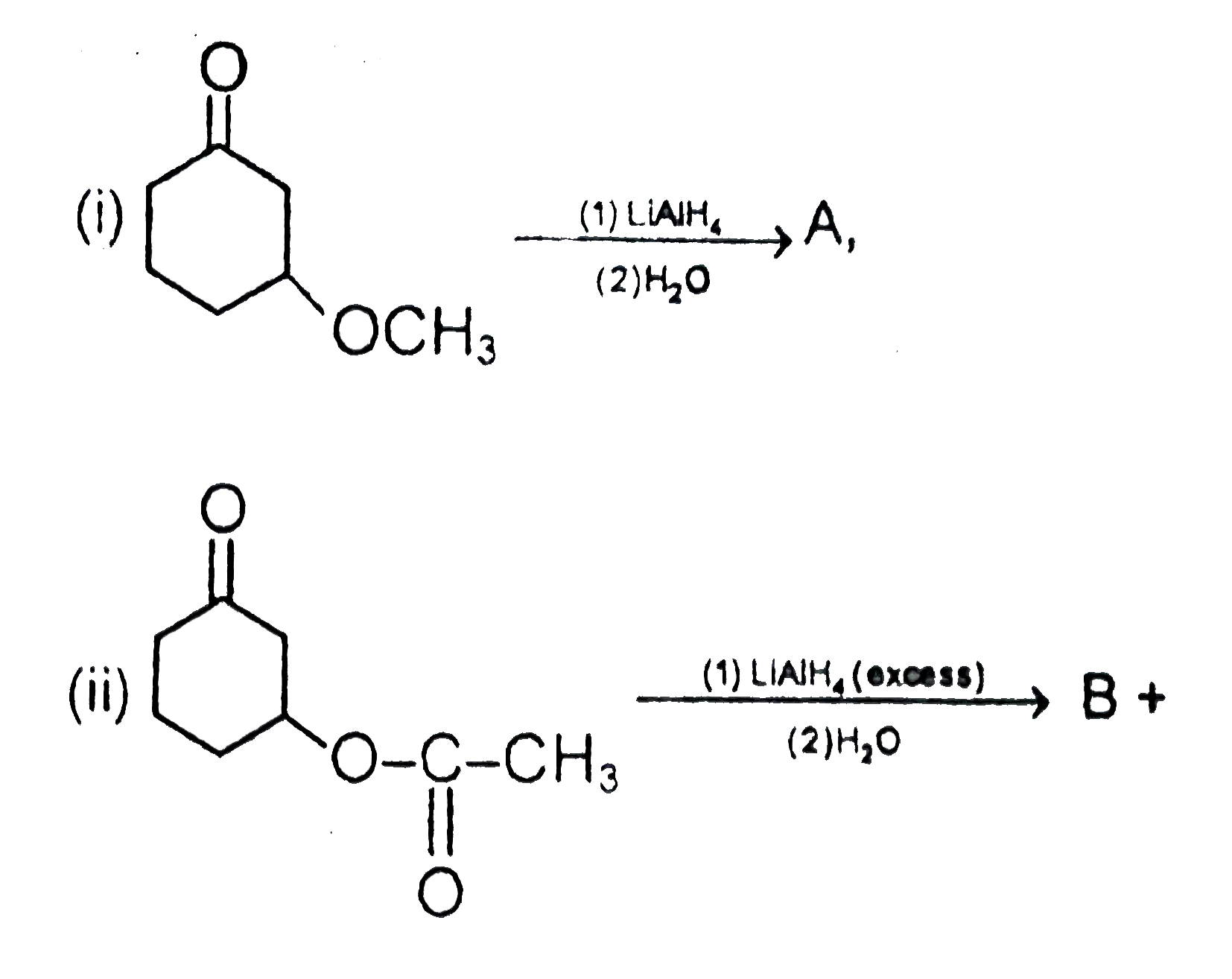The reaction:
CH3CH2I+KOH(aq)→CH3CH2OH+KI
is classified as :
(a) electrophilic substitution (b) nucleophilic substitution
(c) elimination (d) addition
To classify the reaction CH3CH2I+KOH(aq)→CH3CH2OH+KI, we can follow these steps:
Step 1: Identify the Reactants and Products
- The reactants are CH3CH2I (ethyl iodide) and KOH (potassium hydroxide).
- The products are CH3CH2OH (ethanol) and KI (potassium iodide).
Step 2: Analyze the Reaction Mechanism
- In this reaction, the hydroxide ion (OH⁻) from KOH acts as a nucleophile.
- A nucleophile is a species that donates an electron pair to form a chemical bond in a reaction.
Step 3: Determine the Role of the Nucleophile
- The hydroxide ion (OH⁻) attacks the carbon atom that is bonded to the iodine atom in CH3CH2I.
- As the hydroxide ion attacks, it displaces the iodine atom, which leaves as an iodide ion (I⁻).
Step 4: Classify the Reaction
- Since the hydroxide ion (nucleophile) is substituting the iodine atom in the molecule, this reaction is classified as a nucleophilic substitution reaction.
- In summary, the nucleophile (OH⁻) replaces the leaving group (I⁻).
Conclusion
The reaction CH3CH2I+KOH(aq)→CH3CH2OH+KI is classified as (b) nucleophilic substitution.
---
- The reactants are CH3CH2I (ethyl iodide) and KOH (potassium hydroxide).
- The products are CH3CH2OH (ethanol) and KI (potassium iodide).
- In this reaction, the hydroxide ion (OH⁻) from KOH acts as a nucleophile.
- A nucleophile is a species that donates an electron pair to form a chemical bond in a reaction.
- The hydroxide ion (OH⁻) attacks the carbon atom that is bonded to the iodine atom in CH3CH2I.
- As the hydroxide ion attacks, it displaces the iodine atom, which leaves as an iodide ion (I⁻).
- Since the hydroxide ion (nucleophile) is substituting the iodine atom in the molecule, this reaction is classified as a nucleophilic substitution reaction.
- In summary, the nucleophile (OH⁻) replaces the leaving group (I⁻).
The reaction CH3CH2I+KOH(aq)→CH3CH2OH+KI is classified as (b) nucleophilic substitution.
Topper's Solved these Questions
- BOOK - NCERT ENGLISHCHAPTER - ORGANIC CHEMISTRY- SOME BASIC PRINCIPLES AND TECHNIQUESEXERCISE - EXERCISE40videos
ORGANIC CHEMISTRY- SOME BASIC PRINCIPLES AND TECHNIQUES
- BOOK - NCERT ENGLISHCHAPTER - HYDROGENEXERCISE - EXERCISE36videos
HYDROGEN
- BOOK - NCERT ENGLISHCHAPTER - REDOX REACTIONSEXERCISE - EXERCISE30videos
REDOX REACTIONS
Similar Questions
Knowledge Check
- Question 1 - Select One
The reaction :
CH3CH2l+KOH(aq)→CH3CH2OH+Kl
is classified asAelectrophilic substitutionBnucleophilic substitutionCeliminationDaddition - Question 2 - Select One
Following reaction,
(CH3)3CBr+H2O→(CH3)3COH+HBr is an example of
elimination reaction
free radical substitution
nucleophilic substitution
electrophilic substitution.Aelimination reactionBfree radical substitutionCnucleophilic substitutionDelectrophilic substitution.

CH3−CH2−OH
In the given reaction A & B are respectively:View SolutionCH3CH2CHCl2Aq.KOH−−−−−→?
View SolutionWrite mechanism of the following reaction:
CH3CH2OHHBr−−→CH3CH2Br+H2OView SolutionCH3.CH2CH2Claq.KOH−−−−→CH3CH2CH2OH The reaction is
View SolutionIn the following reaction CH3CHO+NH2⋅NH2⋅→AB−−→CH3CH3+N2 Identify A and B .
View SolutionOutline the preparation of the following compounds using a nucleophilic substitution reaction : CH3OC(CH3)3
View Solution

